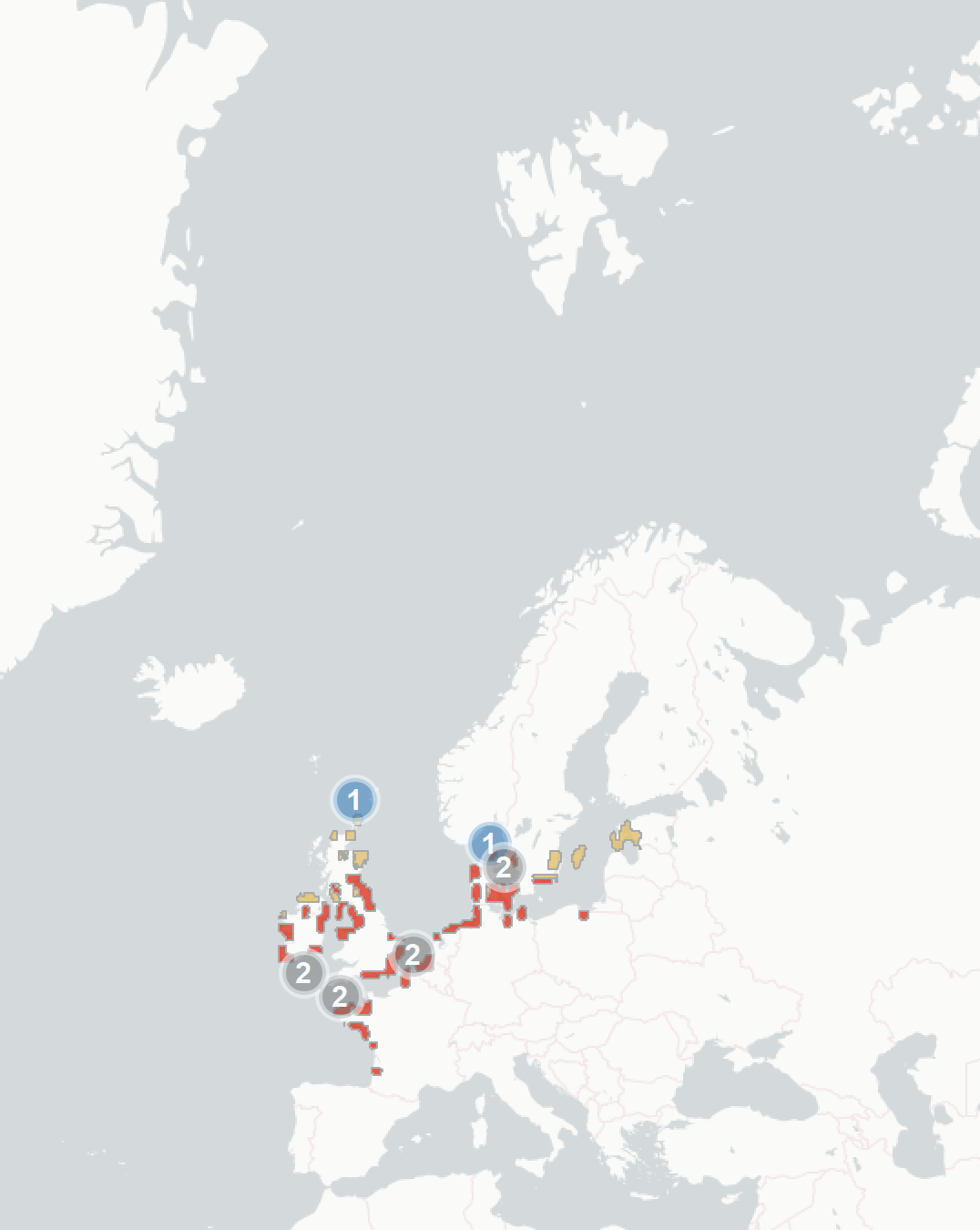Sandwich Tern (Thalasseus sandvicensis): vulnerability to climate change
Evidence for exposure
Potential changes in breeding habitat suitability:
-
Current breeding area that is likely to become less suitable (72% of current range)
-
Current breeding area that is likely to remain suitable (26%)
-
Current breeding area that is likely to become more suitable (2%)
Current impacts to Sandwich Terns attributed to climate change:
-
Neutral Impact: Migration and breeding events are occurring earlier, often making the breeding season shorter
Predicted changes in key prey species:
-
Key prey species are likely to decline in abundance on the southern coast of England, around the Brittany coast, around North Denmark and around the south coast of Ireland.
Sensitivity
-
As Sandwich terns nest on low-lying ground close to the water’s edge, their nests are vulnerable to tidal inundation. So far there are no studies on whether climate change is affecting breeding populations through increased flooding, but predictions of increased storminess and sea-level rise under climate change scenarios may lead to more nesting populations being lost.
Adaptive capacity
-
Sandwich terns often display low site fidelity and will change breeding site from year to year in response to changing conditions or disturbance. This is likely to be adaptive in terms of climate change, as it seems highly likely sandwich terns will redistribute to more suitable areas if available.
